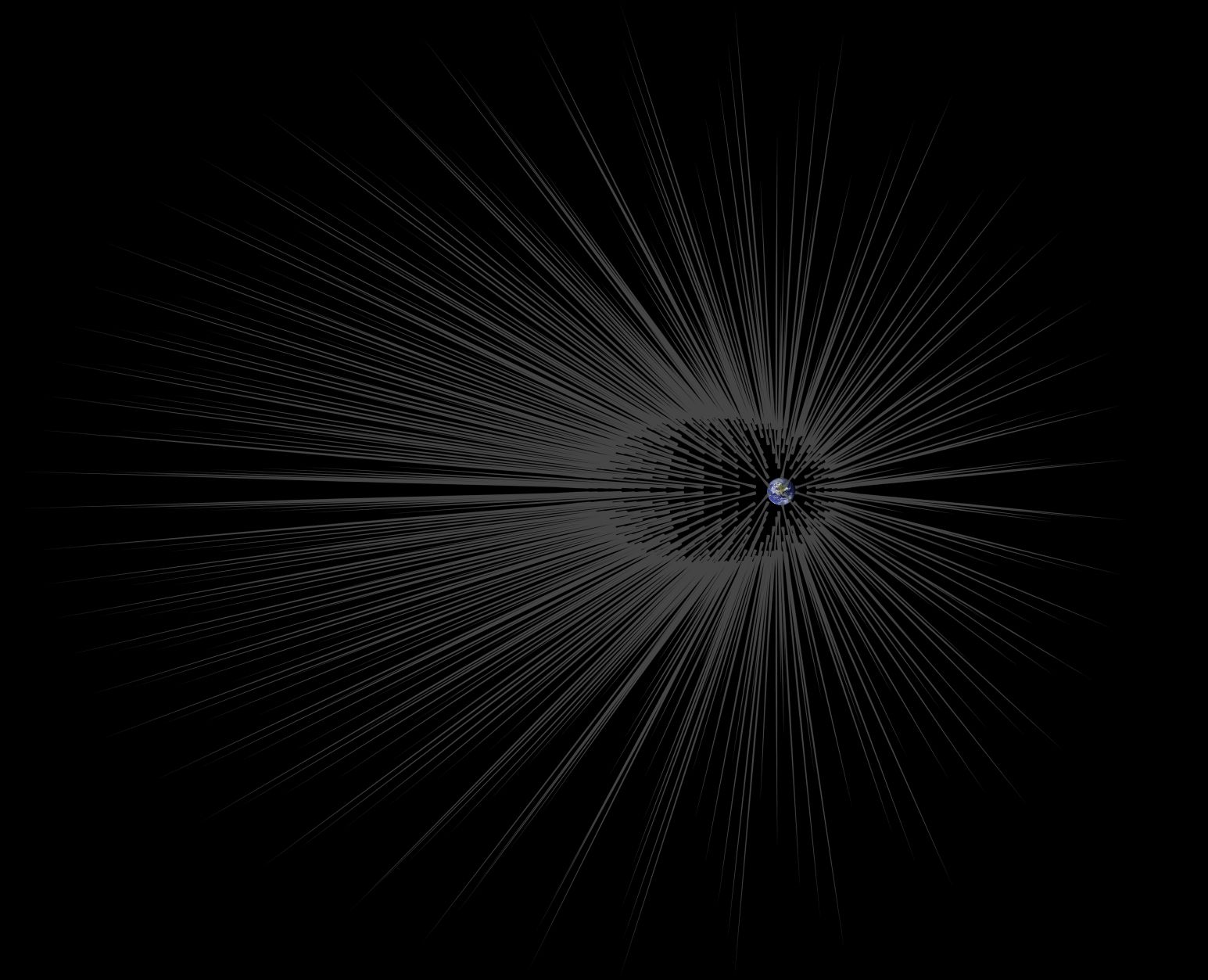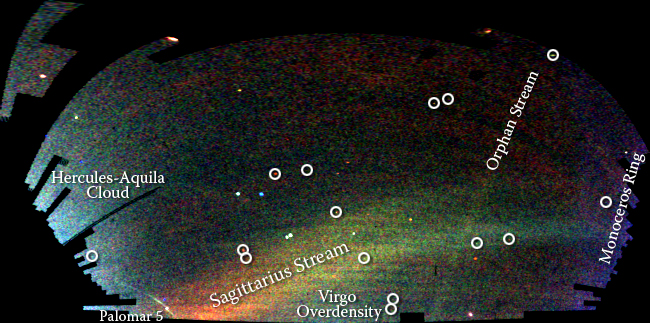
When hunting for dark matter, where would the best place to search for it be? The answer according to a new study is in the vicinity of the Earth just one million kilometers away, an area where our home planet grows long hair-like streams of the elusive, enigmatic substance.
In the great scheme of things, from a purely physical perspective we are just a minority: All the matter and energy that makes up stars, galaxies and people accounts for just 5 percent of the Universe’s total. The rest 95 percent is in the form of the so-called ‘dark matter’ and ‘dark energy’, which make up 27 and 68 percent respectively of the Universe’s entire mass-energy content. Deciphering what exactly constitutes dark energy and dark matter, whose exact nature remain a complete mystery up to this day, has been one of the greatest goals of cosmology and astrophysics for decades. The search for dark matter in particular is a very active area of experimental research, with various detectors under the ground as well as in space currently trying to find its elusive constituent particles, while returning no definitive such results of a direct detection to date.

Nevertheless, the existence of dark matter is very much inferred by a long line of indirect evidence that are found throughout the Universe, including the Cosmic Microwave Background radiation that permeates all of space, the rotation curves of stars inside galaxies and galaxies inside galactic clusters, as well as the observation on cosmic scales of an effect known as galactic gravitational lensing, which is largely caused by the immense gravity of the dark matter halos that surround galaxy clusters. One of the reasons for our lack of any direct observation of dark matter may be due to the fact that, as predicted by theory, its density in our local environment around the Solar System is negligible compared to that of the ordinary, baryonic matter that is dominant in the vicinity of the Sun. Even so, there may be locations around the planets in our Solar System where dark matter density increases greatly by many orders of magnitude, reaching levels that a sensitive space-based detector would be able to observe.
Past theoretical studies had suggested that as our Sun races around the center of the Milky Way at a velocity of approximately 792,000 km/hr, it speeds through streams of dark matter that are thought to penetrate the entire galaxy and can be as large in size as the Solar System itself. In a new paper that appears at The Astrophysical Journal this week, Gary Prézeau from NASA’s Jet Propulsion Laboratory in Pasadena, Cal., set out to study what the effects of the Solar System’s planets would be on such streams. Even though dark matter by its definition is invisible because it has no electromagnetic interaction with ordinary matter, it nevertheless interacts with the latter gravitationally. Using a series of computer simulations, Prézeau found that as a dark matter stream approaches and passes through a massive celestial body like Earth, it is narrowed and refocused by the latter’s gravity into long and very dense filaments, which he called ‘hair’. Similar to the way that a telescope focuses the light from a distant object into a focal plane and magnifies its image, Prézeau’s calculations showed that the Earth’s gravity would focus a dark matter stream into hair-like narrow filaments, while increasing their density by up to a billion times their original value.

The point of highest density, which Prézeau calls the ‘root’ of the ‘hair’, would be located approximately one million km behind our home planet, with the tip of the hair extending out to twice as far. For a more massive planet like Jupiter, Prézeau found that the effect would be even more pronounced, with the density of the dark matter filaments increasing by a factor of 100 more, up to 1 trillion times their original value, while being focused two-thirds closer to the planet compared to Earth’s. “Using both an analytical model of planetary density and numerical simulations…dark matter streams moving through a compact body are shown to produce hugely magnified dark matter densities along the stream velocity axis going through the center of the body”, writes Prézeau in his study. “Typical hair density enhancements are 107 for Earth and 108 for Jupiter. The largest enhancements occur for particles streaming through the core of the body that mostly focus at a single point called the root of the hair. For the Earth, the root is located at about 106 km from the planetary center with a density enhancement of around 109 while for a gas giant like Jupiter, the root is located at around 105 km with an enhancement of around 1011″.
The fascinating results of Prézeau’s study could prove to be a boon for observational cosmology and astrophysics, allowing scientists to place dedicated space-based detectors at the specific points of maximum dark matter hair density around our home planet and ultimately provide the first direct observations of the elusive, mysterious substance that has evaded us for almost a century. “If we could pinpoint the location of the root of these hairs, we could potentially send a probe there and get a bonanza of data about dark matter,” says Prézeau. In addition, this search could also provide many unexpected advances in planetary science as well. An intriguing result of Prézeau’s study was that as the dark matter filaments would pass through the different layers of a planet’s interior, their density would change according to the different types of planetary material they would meet in the process. By studying these density fluctuations, scientists could theoretically learn much about planetary interiors that could not be possible otherwise.
Provided that the results of Prézeau’s results are confirmed by follow-up studies, the space-based search for dark matter could turn out to be the best game in town in the following decades.
Be sure to “Like” AmericaSpace on Facebook and follow us on Twitter: @AmericaSpace
.





Love the fine work coming from JPL!
Dark matter has been “detected” in other galaxies basically because there is a difference between how those galaxies behave and how mathematical models of them behave when those models are based on their estimated mass. Dark matter is the theoretically undetectable matter needed to make up the mass for their movement to match out models.
Thus, if there is dark matter in our solar system, should we not have already detected it by a similar discrepancy between predicted and observed orbital mechanics of planets, comets and asteroids?
There are indeed some orbital anomalies that have yet to be explained.
https://en.wikipedia.org/wiki/Flyby_anomaly